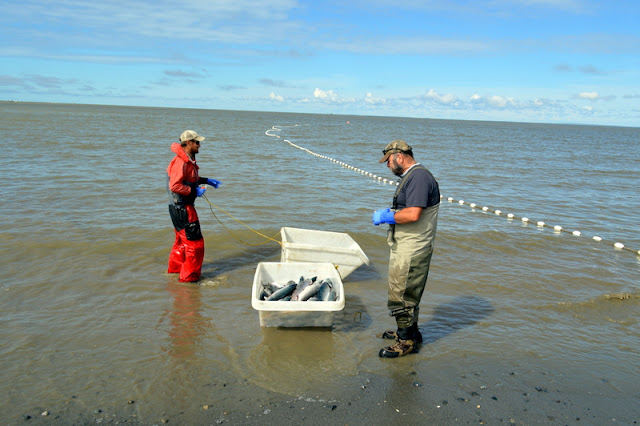Pete lifts our catch weighing it and placing it in his tote.
Most trips to sell fish were followed by a trip to the grocery store in Naknek. This well stocked store had everything needed. Alaskan prices are always on the high side, but the prices in remote villages are like comparing the Empire State Building to a Dubai skyscraper. I was at the point of being too hungry to listen to my brain tell me that what I was looking at was too expensive. I did, however, pass up the small yogurt for $3. A candy bar for $2 seemed like a buy!
This isn't the Costco size!
Good "ole" Vermount socks way out in Naknek.
We finished up our time with Carter by shipping home 165 pounds of salmon fillets and having experienced in the most minute way, life as a Bristol Bay fisherman. I've now seen enough to know that Naknek, much like Talkeetna, will soon return to its off season mode. Outsiders will return to their homes, some wealthier than when they came. Be it yellow gold from the mines, red gold from the sea, or black gold from beneath the sea, many folks work hard to enjoy what Alaska has to offer. However, when the cold winter winds blow, most look for a warm escape.
refrigerated containers of fish waiting for shipping
cannery houses at Pederson Point
drift netters stored for winter
the North Point from Kodiak
activity on the North Point deck
fishing cabin on the beach
beach fly-by
|




























